第324章
That Pocahontas was a gentle-hearted and pleasing girl, and, through her acquaintance with Smith, friendly to the whites, there is no doubt; that she was not different in her habits and mode of life from other Indian girls, before the time of her kidnapping, there is every reason to suppose.It was the English who magnified the imperialism of her father, and exaggerated her own station as Princess.She certainly put on no airs of royalty when she was "cart-wheeling"about the fort.Nor does this detract anything from the native dignity of the mature, and converted, and partially civilized woman.
We should expect there would be the discrepancies which have been noticed in the estimates of her age.Powhatan is not said to have kept a private secretary to register births in his family.If Pocahontas gave her age correctly, as it appears upon her London portrait in 1616, aged twenty-one, she must have been eighteen years of age when she was captured in 1613 This would make her about twelve at the time of Smith's captivity in 1607-8.There is certainly room for difference of opinion as to whether so precocious a woman, as her intelligent apprehension of affairs shows her to have been, should have remained unmarried till the age of eighteen.In marrying at least as early as that she would have followed the custom of her tribe.It is possible that her intercourse with the whites had raised her above such an alliance as would be offered her at the court of Werowocomoco.
We are without any record of the life of Pocahontas for some years.
The occasional mentions of her name in the "General Historie" are so evidently interpolated at a late date, that they do not aid us.When and where she took the name of Matoaka, which appears upon her London portrait, we are not told, nor when she was called Amonata, as Strachey says she was "at more ripe yeares." How she was occupied from the departure of Smith to her abduction, we can only guess.To follow her authentic history we must take up the account of Captain Argall and of Ralph Hamor, Jr., secretary of the colony under Governor Dale.
Captain Argall, who seems to have been as bold as he was unscrupulous in the execution of any plan intrusted to him, arrived in Virginia in September, 1612, and early in the spring of 1613 he was sent on an expedition up the Patowomek to trade for corn and to effect a capture that would bring Powhatan to terms.The Emperor, from being a friend, had become the most implacable enemy of the English.Captain Argall says: "I was told by certain Indians, my friends, that the great Powhatan's daughter Pokahuntis was with the great King Potowomek, whither I presently repaired, resolved to possess myself of her by any stratagem that I could use, for the ransoming of so many Englishmen as were prisoners with Powhatan, as also to get such armes and tooles as he and other Indians had got by murther and stealing some others of our nation, with some quantity of corn for the colonies relief."By the aid of Japazeus, King of Pasptancy, an old acquaintance and friend of Argall's, and the connivance of the King of Potowomek, Pocahontas was enticed on board Argall's ship and secured.Word was sent to Powhatan of the capture and the terms on which his daughter would be released; namely, the return of the white men he held in slavery, the tools and arms he had gotten and stolen, and a great quantity of corn.Powhatan, "much grieved," replied that if Argall would use his daughter well, and bring the ship into his river and release her, he would accede to all his demands.Therefore, on the 13th of April, Argall repaired to Governor Gates at Jamestown, and delivered his prisoner, and a few days after the King sent home some of the white captives, three pieces, one broad-axe, a long whip-saw, and a canoe of corn.Pocahontas, however, was kept at Jamestown.
Why Pocahontas had left Werowocomoco and gone to stay with Patowomek we can only conjecture.It is possible that Powhatan suspected her friendliness to the whites, and was weary of her importunity, and it may be that she wanted to escape the sight of continual fighting, ambushes, and murders.More likely she was only making a common friendly visit, though Hamor says she went to trade at an Indian fair.
The story of her capture is enlarged and more minutely related by Ralph Hamor, Jr., who was one of the colony shipwrecked on the Bermudas in 1609, and returned to England in 1614, where he published (London, 1615) "A True Discourse of Virginia, and the Success of the Affairs there till the 18th of June, 1614." Hamor was the son of a merchant tailor in London who was a member of the Virginia company.
Hamor writes: